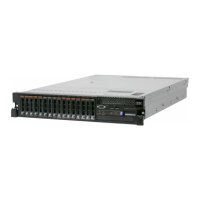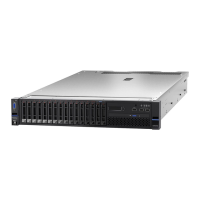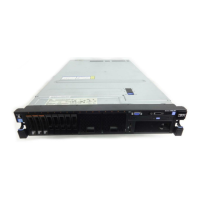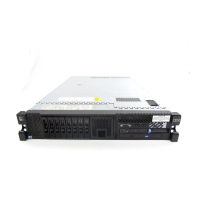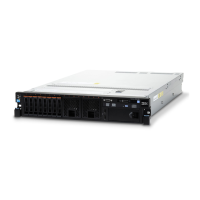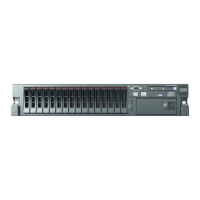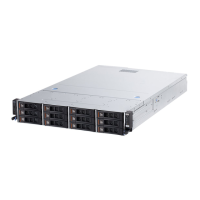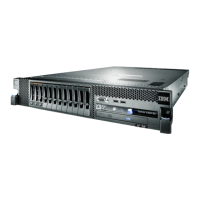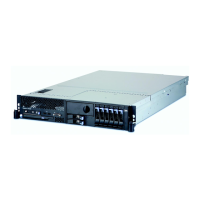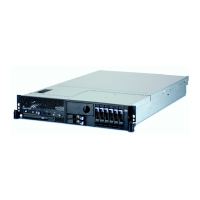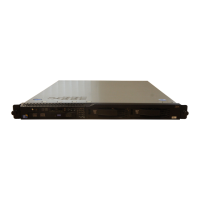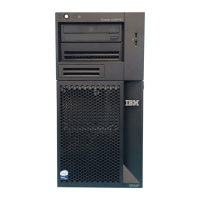v Follow the suggested actions in the order in which they are listed in the Action column until the problem
is solved.
v See Chapter 4, “Parts listing, Types 4255, 7945, and 7949 server,” on page 157 to determine which
components are customer replaceable units (CRU) and which components are field replaceable units
(FRU).
v If an action step is preceded by “(Trained service technician only),” that step must be performed only by a
trained service technician.
Symptom Action
An installed hard disk drive is
not recognized.
1. Observe the associated amber hard disk drive status LED. If the LED is lit, it
indicates a drive fault.
2. If the LED is lit, remove the drive from the bay, wait 45 seconds, and reinsert
the drive, making sure that the drive assembly connects to the hard disk drive
backplane.
3. Observe the associated green hard disk drive activity LED and the amber
status LED:
v If the green activity LED is flashing and the amber status LED is not lit, the
drive is recognized by the controller and is working correctly. Run the DSA
hard disk drive test to determine whether the drive is detected.
v If the green activity LED is flashing and the amber status LED is flashing
slowly, the drive is recognized by the controller and is rebuilding.
v If neither LED is lit or flashing, check the hard disk drive backplane (go to
step 4).
v If the green activity LED is flashing and the amber status LED is lit, replace
the drive. If the activity of the LEDs remains the same, go to step 4. If the
activity of the LEDs changes, return to step 1.
4. Make sure that the hard disk drive backplane is correctly seated. When it is
correctly seated, the drive assemblies correctly connect to the backplane
without bowing or causing movement of the backplane.
5. Move the hard disk drives to different bays to determine if the drive or the
backplane is not functioning.
6. Reseat the backplane power cable and repeat steps 1 through 3.
7. Reseat the backplane signal cable and repeat steps 1 through 3.
8. Suspect the backplane signal cable or the backplane:
v If the server has eight hot-swap bays:
a. Replace the affected backplane signal cable.
b. Replace the affected backplane.
v If the server has 12 hot-swap bays:
a. Replace the backplane signal cable.
b. Replace the backplane.
c. Replace the SAS expander card.
9. See “Problem determination tips” on page 155.
Multiple hard disk drives fail. Make sure that the hard disk drive, SAS RAID controller, and server device drivers
and firmware are at the latest level.
Important: Some cluster solutions require specific code levels or coordinated
code updates. If the device is part of a cluster solution, verify that the latest level of
code is supported for the cluster solution before you update the code.
Multiple hard disk drives are
offline.
1. Review the storage subsystem logs for indications of problems within the
storage subsystem, such as backplane or cable problems.
2. See “Problem determination tips” on page 155.
Chapter 3. Diagnostics 45
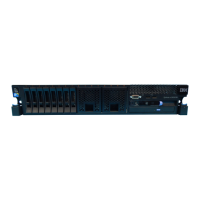
